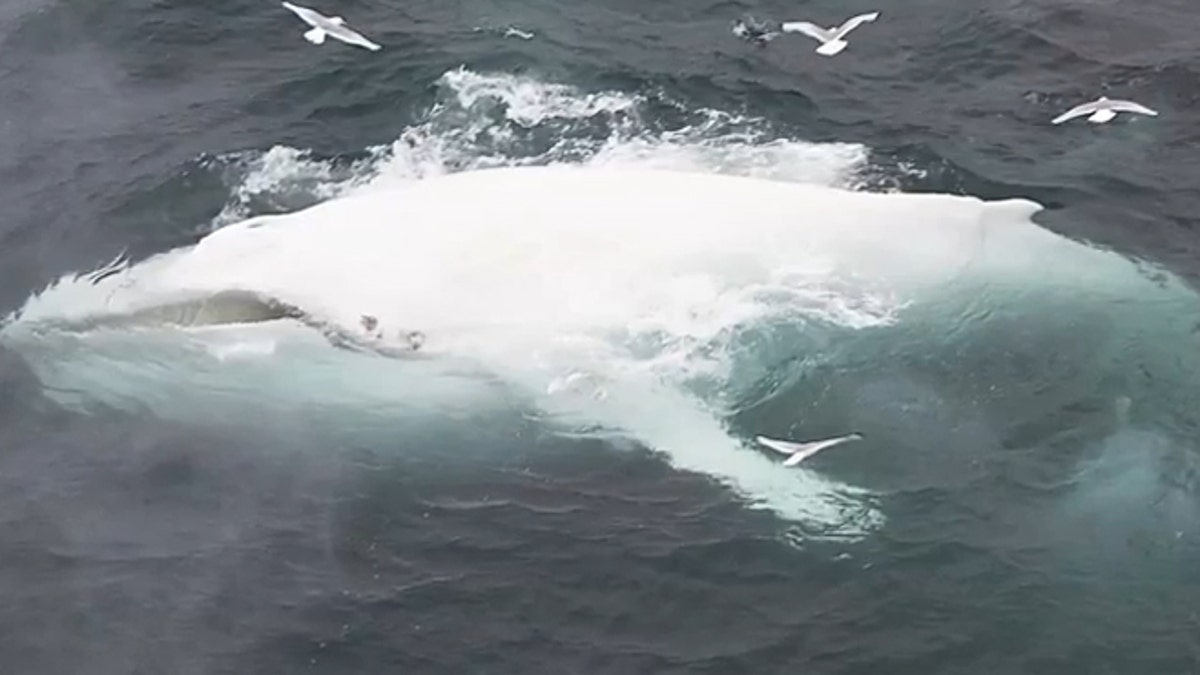
The white humpback whale named Migaloo is spotted off the coast of Byron Bay, Australia’s most easterly point, on Sept. 28, 2009 in Byron Bay, Australia. (Barcroft TV/YOUTUBE)
Migaloo, the famous white humpback whale, has been spotted off the coast of Australia, making his journey north from feeding grounds around Antarctica to wintering waters off the Great Barrier Reef. And this time, he isn’t the only white whale making the journey, leading scientists to wonder if he has an offspring or a doppelganger.
Migaloo was first sighted in 1991 off Byron Bay, Australia’s most easterly point; researchers bestowed the name — which in the language of Queensland’s Aboriginal community means “white fella” — shortly afterward. Not until 2004, when he sloughed some skin that scientists with the Southern Cross University Whale Research Center were able to collect and subject to DNA analysis, were those scientists able to confirm his gender and develop a genetic fingerprint that will enable them to check his relationship with any other whales from which they gain samples.
PHOTOS: Sharks, Marine Mammals Hang in Paradise
Although Migaloo was for years assumed to be unique, he now has a younger, similarly-pigmented companion. The calf was first spotted in 2011, and was seemingly sighted again earlier this month, as part of a group of four whales swimming north off New South Wales. On that same day, what was presumed to be Migaloo was spotted swimming slowly with a group of six whales farther north.
Given the extreme rarity of a white humpback, the existence of the younger whale (unofficially dubbed MJ for Migaloo Junior) is remarkable, whether it is Migaloo’s offspring or the calf of an entirely different pair of whales.
NEWS: Whales Get Fishing Tips From Peers
All humpback whales are protected from harassment in Australian waters. Whalewatching vessels must approach at no faster than 6 knots when within 300 meters of an adult humpback, and vessels are prohibited from approaching closer than 100 meters to adults, or 300 meters if a calf is present. Because of his unique status, Migaloo is granted an additional layer of protection: No water craft, including jet skis, may approach closer than 500 meters, and aircraft must remain 2,000 meters or more above him. Violating those rules is subject to a fine of more than US $15,300. It remains to be seen if MJ will receive similar protection.
Whalewatchers are keenly looking for further sightings along Australia’s east coast, and the White Whale Research Center is posting them as they come in.
